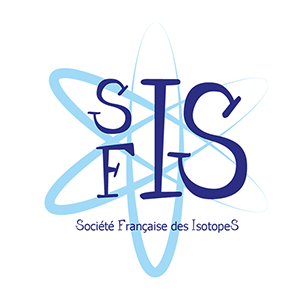![]() Dans le cadre du partenariat avec l’EAG, la SFIS parraine deux sessions scientifiques lors de la prochaine Conférence Goldschmidt de Prague (16-21 Août 2015). La date limite d’envoi des résumés (2 avril) approche et vous êtes encouragés à soumettre des communications!
Dans le cadre du partenariat avec l’EAG, la SFIS parraine deux sessions scientifiques lors de la prochaine Conférence Goldschmidt de Prague (16-21 Août 2015). La date limite d’envoi des résumés (2 avril) approche et vous êtes encouragés à soumettre des communications!
Session 04d: Environmental Isotope Biogeochemistry and Human Health Applications
Convenors: Klervia Jaouen, Masaharu Tanimizu, Jeroen Sonke
Keynote: Friedhelm von Blanckenburg (GFZ, Potsdam)
Inorganic essential elements such as Fe, Cu, Zn, Ca, Mg, Se etc. play crucial roles in metabolism. At elevated concentrations essential elements and other non-essential elements such as Hg, Cd, Tl, Sb etc., can trigger dramatic consequences on vital body functions. Information embedded at the isotopic level of these elements helps us understand their homeostasis within organisms, but also their biogeochemical cycling in the natural environment. In this session we invite contributions that use heavy stable isotopes to provide new insights into biogeochemical and biochemical cycling of elements within ecosystems and within organisms. Biochemical and health applications involving light stable isotopes (CHONS) are also welcome. Contributions may include studies of nutrient and contaminant sources, transfer and exposure in all Earth surface environments and by observational, experimental or modelling (ab initio and box model) approaches. We also welcome investigations of elemental budget and response to elemental excess and deficiency in the human body and food webs through mass-dependent and mass independent isotope fractionation systematics – giving new perspectives for medical, forensic and archeological applications.
Session 17g: Stable Isotope Fractionation Mechanisms in Planetary Crusts and Interiors
Convenors: Franck Poitrasson, Mathieu Roskosz
Keynote: Bernard Bourdon (CNRS, Lyon)
This session should gather contributions aiming at a better understanding of the mechanisms of stable isotope fractionation and of the resulting isotope distribution in the different component of the solid Earth and other planets. It should bring together presentations based on natural sample analyses, computational modeling and experimental studies. These may focus on the high temperature fractionation mechanisms of stable isotopes occurring, for example, during planet formation and/or the differentiation of metallic cores or silicate crusts. The processes involved may range from magma differentiation to vaporization in space, and they may also include the effect of hydrothermal fluids.
